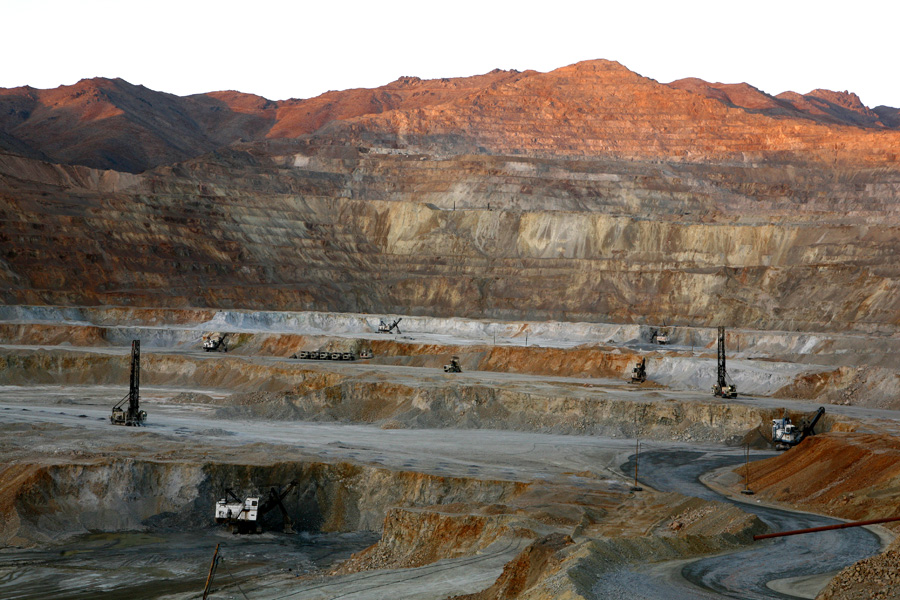
Copper Industry’s Path to Growth Riddled With Challenges

Copper, a soft, malleable and ductile metal with high thermal and electrical conductivity is one of the world’s most important and widely consumed non-ferrous metals. It is used as a conductor of heat and electricity, as a building material and a constituent of various metal alloys.
Iran’s 2.6 billion tons of copper reserves account for 4% of the world’s total and domestic production represents 75% of the total for the Middle East. National Iranian Copper Industries Company is listed on Tehran Stock Exchange and is the country’s top non-oil exporter.
According to Farshid Soltanzadeh, Iran’s copper industry is yet to realize its true potential due to the systemic challenges it is grappling with, the Persian daily Forsat-e Emrooz reported.
High copper production costs is one of the primary adverse factors. The domestic copper industry is largely state-dominated, with the National Iranian Copper Industries Company being the largest producer of the metal with the output of 250,000 tons of copper products per annum.
With more than 20,000 people, NICICO also employs the highest number of workforce in the industry.
The official believes that the number of workers in the industry is well above the global standard, which is incidentally one of the main causes of high production costs.
Soltanzadeh also pointed to the low profit margin in copper manufacturing and processing compared to copper mining and extraction and said: “Each ton of mined copper can yield close to $1,000 of profit, while processed copper barely exceeds $100 per ton. Costs must be cut down heavily and copper companies should use modern production machinery to cut down on the number of workforce.”
Also, the country’s low copper consumption and demand, coupled with the production plants’ high costs and outdated production technologies have put the producers between a rock and a hard place.
“Supply always exceeds demand at home, which has led to a glut of copper in the domestic market. Furthermore, our lack of competitiveness in global markets has kept us from succeeding in exports, despite the industry’s 750,000 tons of excess semi-finished products production capacity,” he said.
Soltanzadeh called on the government to improve the industry’s international presence and “externalize” it in order to make the maximum use of the copper sector’s potential in the post-sanctions era.
Developing the mining industry has been one of the government’s main areas of focus following the removal of sanctions imposed on Iran over its nuclear energy program as part of the July 14 nuclear deal reached between Iran and world powers.
For miners, the reopening of Iran to international trade meant regaining access to lucrative export markets and new production technologies.
The copper sector looks ready to benefit, as the Iranian Mines and Mining Industries Development and Renovation Organization–Iran’s largest mining holding–recently held talks with the global mining giant Rio Tinto in Berlin on the possibility of new investments in Iran’s copper, aluminum, steel and gold industries. This was revealed by IMIDRO chief, Mehdi Karbasian, after opening an Iran-Europe business center last week.
“Last month, top executives of Glencore, Trafigura and Aurubis participated in a meeting in Hamburg to discuss cooperation in the Iranian copper industry,” he said.
Karbasian said earlier this year that Glencore and China’s NFC already have business agreements to help develop Iran’s copper industry. Iran hopes to raise its copper concentrates output to 2 million tons a year by 2025 in conjunction with partners, from some 200,000 tons per year at present, as part of a national development plan.


Trump weighs using $2 billion in CHIPS Act funding for critical minerals

Codelco cuts 2025 copper forecast after El Teniente mine collapse

Electra converts debt, launches $30M raise to jumpstart stalled cobalt refinery

Barrick’s Reko Diq in line for $410M ADB backing

Abcourt readies Sleeping Giant mill to pour first gold since 2014

Nevada army depot to serve as base for first US strategic minerals stockpile

SQM boosts lithium supply plans as prices flick higher

Viridis unveils 200Mt initial reserve for Brazil rare earth project

Tailings could meet much of US critical mineral demand – study

Kyrgyzstan kicks off underground gold mining at Kumtor

Kyrgyzstan kicks off underground gold mining at Kumtor

KoBold Metals granted lithium exploration rights in Congo

Freeport Indonesia to wrap up Gresik plant repairs by early September

Energy Fuels soars on Vulcan Elements partnership

Northern Dynasty sticks to proposal in battle to lift Pebble mine veto

Giustra-backed mining firm teams up with informal miners in Colombia

Critical Metals signs agreement to supply rare earth to US government-funded facility

China extends rare earth controls to imported material

Galan Lithium proceeds with $13M financing for Argentina project

Kyrgyzstan kicks off underground gold mining at Kumtor

Freeport Indonesia to wrap up Gresik plant repairs by early September

Energy Fuels soars on Vulcan Elements partnership

Northern Dynasty sticks to proposal in battle to lift Pebble mine veto

Giustra-backed mining firm teams up with informal miners in Colombia

Critical Metals signs agreement to supply rare earth to US government-funded facility

China extends rare earth controls to imported material

Galan Lithium proceeds with $13M financing for Argentina project

Silver price touches $39 as market weighs rate cut outlook

















